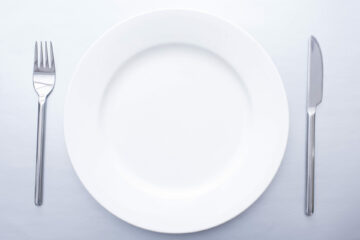Fasting is defined as an abstinence from foods for a certain period of time. Most fasts are between 24-72 hours, though this can greatly vary. Fasting is a practice that dates back many years, even though it has gained popularity in recent years.
There are several health benefits that can be associated to fasting. It’s important to consider the special needs of women when fasting, due to the menstrual cycle. There are changes to the hormonal balance, that can impact the influences of fasting.
Phases of Menstrual Cycle
Before we go into these more, it would be helpful to discuss the 4 different phases of the standard menstrual cycle. Keep in mind that each cycle can vary in length.
- Menstruation (Days 1-5): When the active period starts, where the uterine lining is shed. Usually lasting between 4-7 days. Oestrogen and progesterone levels are low at the start, with oestrogen slowly increasing towards the end of the phase.
- Follicular Phase (Days 1-14): This starts the first day of menstruation and lasts until ovulation. Follicle-stimulating hormone (FSH) stimulates the development of ovarian follicles, each containing an egg. As oestrogen levels start to rise, these follicles mature.
- Ovulation (Day 14): This usually happens in the middle of the menstrual cycle, where the mature egg is released from the ovary. There is a big increase in luteinising hormone (LH), which causes the release of the egg, and oestrogen levels are at their highest.
- Luteal Phase (days 15-28): The time between ovulation and the start of the next menstruation. Progesterone levels rise, preparing the uterus for a potential pregnancy. If pregnancy does not occur, oestrogen and progesterone levels fall in the later days, and this change in hormone can lead to premenstrual symptoms such as mood changes, bloating etc, before the menstruation starts again.
What is the link between fasting and the menstrual cycle?
Being in the fasted state can trigger stress and hormonal imbalances, both of which have a big impact on menstrual cycle. Although there is still little evidence, here is what we know.
High levels of stress can increase the release of corticotrophin-releasing hormone (CRH), which stimulates the release of cortisol. Higher cortisol levels can suppress the release of PH, the hormone that triggers ovulation. Therefore, high cortisol levels can impact ovulation.
Intermittent fasting can reduce the levels of oestrogen too, which can negatively influence the ovulation stage of the cycle. Lower levels of oestrogen are linked to amenorrhea (absence of periods) and even infertility.
Around a week before the period starts, oestrogen levels start to fall (end of luteal phase). This decline in oestrogen hormone can be stressful on the body, leading to higher cortisol levels, so this may not be the optimal time to fast!
How to fast safely during the menstrual cycle
The key to fasting around the cycle is to try to keep the hormones balanced and regulate the cycle. Although everyone is different, the following can help you fast in sync to your menstrual cycle.
During the menstruation phase, this can be a good time to fast, as the body is starting to build up oestrogen slowly. Keep to overnight fasts between 12-14 hours, a few days into the period.
During the follicular phase, the fasting window can increase, as oestrogen levels are higher and usually women have the most energy during this phase, as well as better insulin sensitivity. During this time, having more carbohydrates to help fuel higher intensity workouts can also work well.
Once the ovulation stage occurs, start to reduce the fasting window to between 12–14-hour overnight fasts, reduce exercise intensity and reduce carbohydrate intake. This is because insulin sensitivity can decline, so focus more on good quality protein intake, such as lean meats, eggs, fish, beans, lentils and soy.
In the luteal phase, the hormone progesterone is produced, so it is important to avoid fasting and to eat balanced meals regularly. Focusing on self-care and moderate intensity exercise is important, as well as minimising peaks in blood sugar, by avoiding simple carbohydrates that are high in sugar.
During all phases, it is important to nourish the body with healthy fats, from avocados, nuts, seeds, oily fish and olive oil, as well as high fibre intake from fruits, vegetables, pulses and beans.
Remember that fasting can be a form of stress on the body, so try to keep additional stress low such as intense exercise (e.g. HIIT style classes), opting for more gentle exercises like walks and Pilates, especially around the luteal phase.
Keep in mind that every woman is different, and you need to be mindful of how you feel whilst fasting at different points of the menstrual cycle. Some women can tolerate more frequent fasts, and others may react negatively, so listen to the body and be flexible with your approach, if fasting is something you want to try. If you want to learn more about relation between fasting and menstrual cycles, consult one of our women’s health dietitian.







